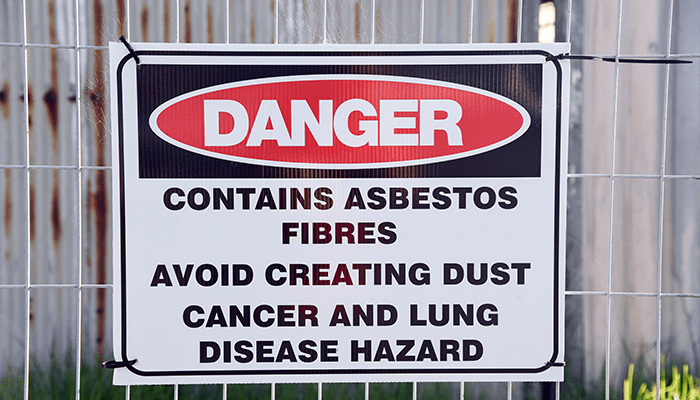Asbestos Testing In Your Home

What is asbestos?
Asbestos is a silicate mineral that has been used in the past for various commercial applications, due to its resistance to heat and other insulating properties. Because asbestos naturally occurs in the environment as durable bundles of fibers, its tensile strength has been applied in the manufacturing of everything from toasters and dishwashers, to fireproof vests and roofing materials.
The use of asbestos curbed around 1980, when it was found to be carcinogenic, causing mesothelioma. In 1989 the U.S. Environmental Protection Agency (EPA) put a ban on any new uses of asbestos, however, those that pre-date 1989 are still allowed. Asbestos becomes hazardous when it is airborne, and risk factors include both the concentration of asbestos in the air and the cumulative duration of exposure. Industries with the highest risk of asbestos-related occupational hazards are military veterans, sheet metal workers, auto mechanics, firefighters, electricians and others who have been exposed to asbestos in the past several decades.
How do you know if your home has asbestos?
Older homes—those built before 1980—could contain some asbestos, whether it’s in the roof shingles, flashing, siding, tiling, ducts, insulation or joint compound. As the asbestos particles start to deteriorate due to damage or old age, fibers are released into the air. Asbestos transite pipes also pose a problem. As the cement pipes break down, asbestos fibers can make their way through the piping and into the drinking water.
The only way to successfully test for asbestos within the home is to send samples of the suspected contamination sites into a lab for analysis. While there are a few DIY home asbestos testing kits available, the American Lung Association strongly recommends enlisting the expertise of a professional service, like Inspect-It 1st.
If asbestos is found in your home, there are a few different ways to deal with it, depending on where it is located. If the material is still in good condition, the asbestos is contained and doesn’t pose an imminent threat. Sometimes the asbestos-containing material can be isolated and repaired. In drastic cases, asbestos removal is possible. Asbestos abatement is the only permanent solution to the problem, which can be done by a certified professional.
Concerned that you and your family’s health is at risk due to the asbestos in your house? Call Inspect-It 1st to perform asbestos testing in your home and give you piece of mind.
